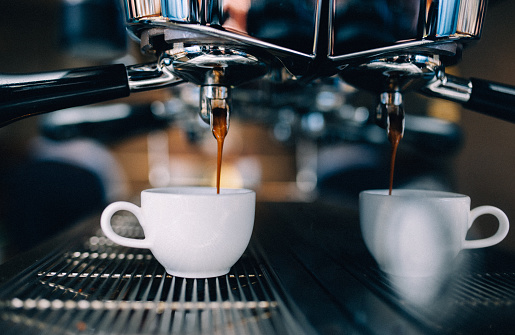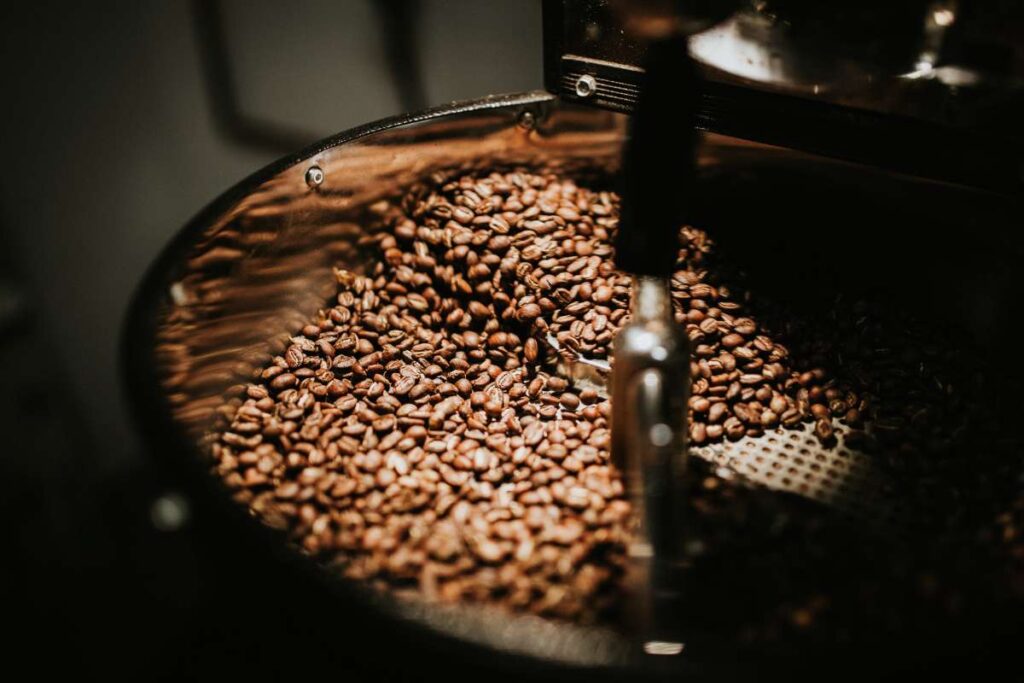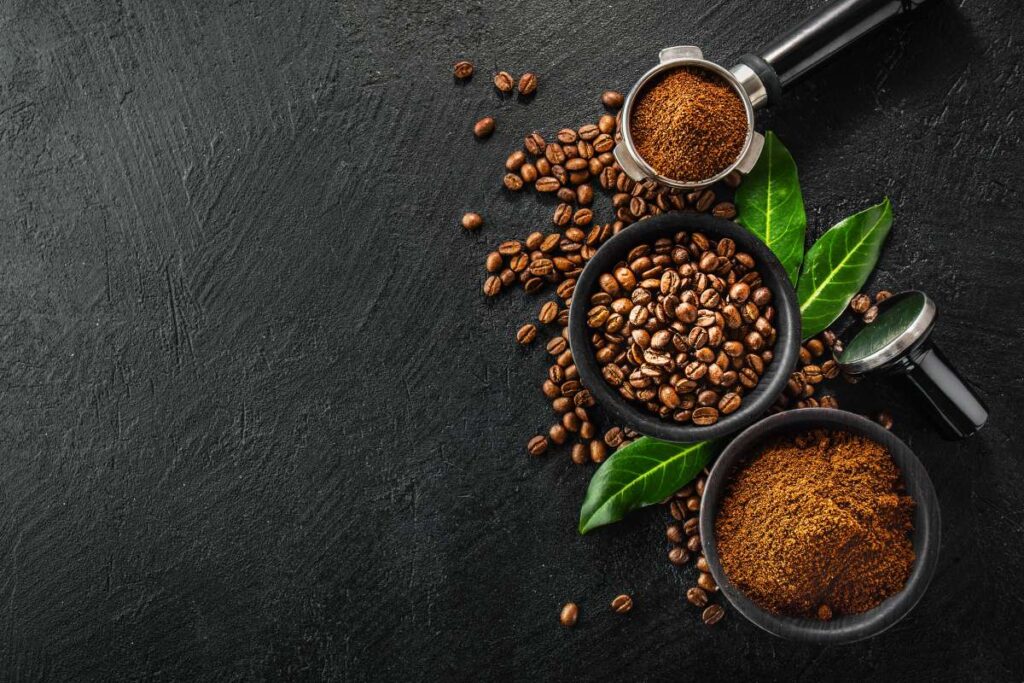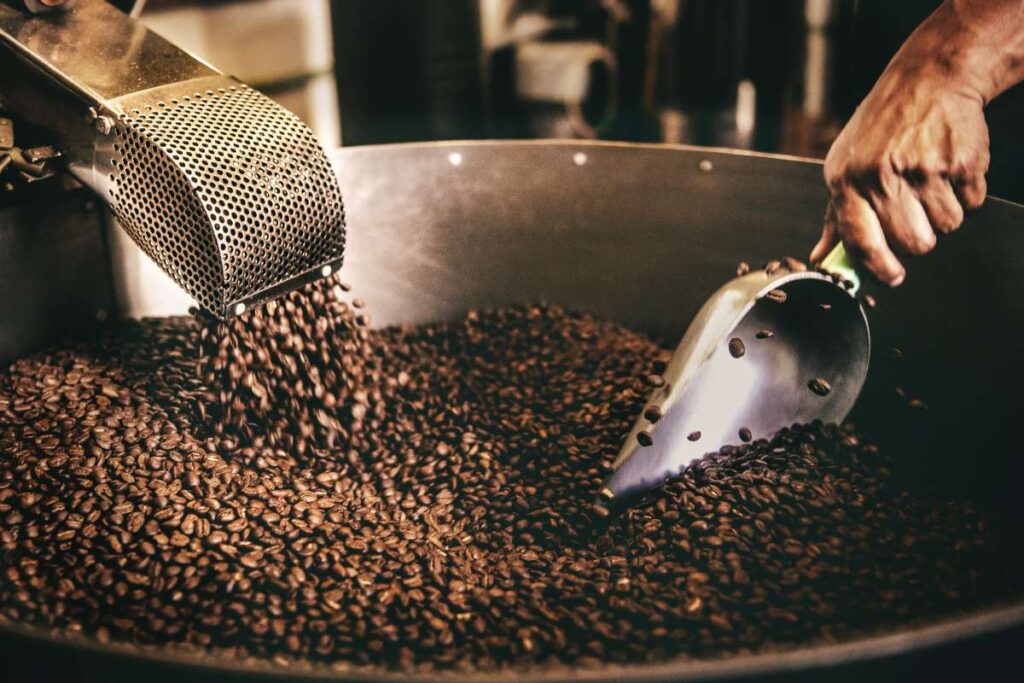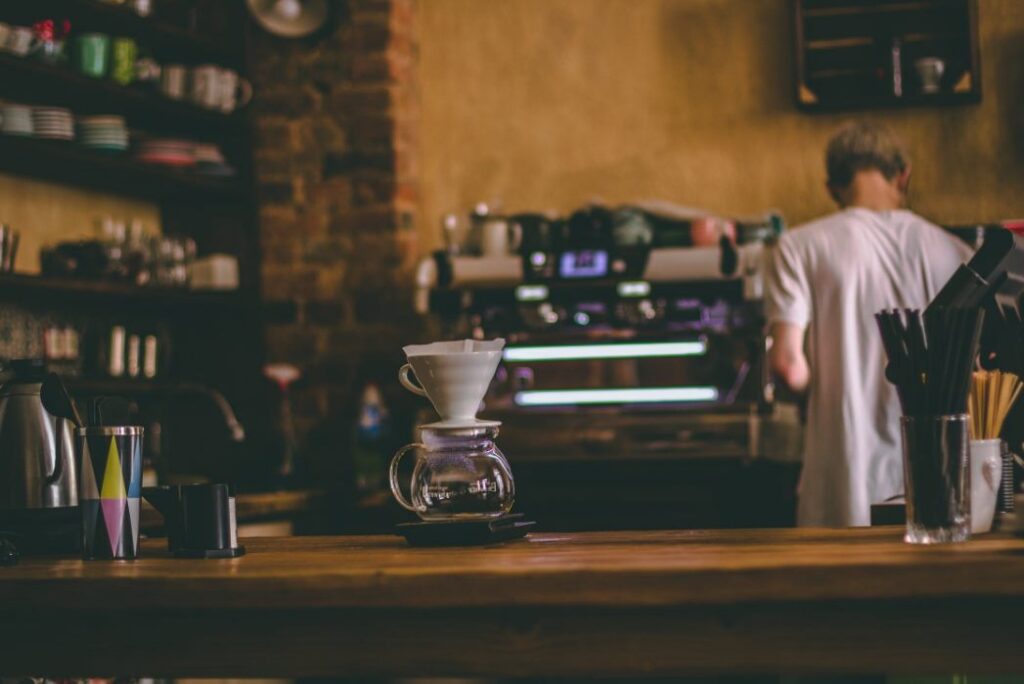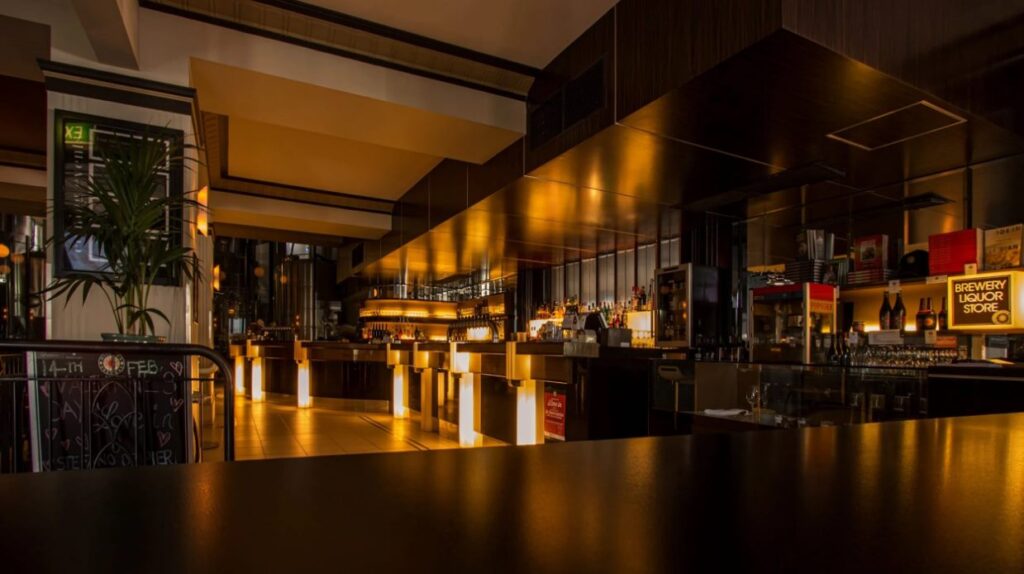Australia has a robust coffee culture, and this is no secret. Why, therefore, does coffee from Australia taste so good? Australian coffee's distinct flavour is the result of many variables, including the quality of the beans and the roasting technique. Reasons why Australian coffee is so well-liked around the world are discussed in this piece. You should visit some of Australia's finest cafés if you enjoy a good cup of joe.
Has a cup of coffee in Australia ever been on your travel itinerary? If so, then you've probably tried some of the world's finest coffee right here in Australia. Nevertheless, why is that the case? Why do Australians have the best coffee? In this article, we'll explore what sets Australian coffee apart from the rest of the pack. Travel to the Land Down Under if you want a great cup of coffee.
The Australian love of coffee begs the question: why?
The coffee in Australia is often considered to be the greatest in the world Melbourne the biggest coffee hub in Australia. But what makes Australian Coffee so special?
The Australian lifestyle includes a daily ritual of enjoying a cup of coffee. Australians are willing to pay a premium for coffee that meets their high standards of quality and flavour. The speciality coffee movement, nes, has consolidated across the country thanks to the rise of home-grown production and espresso machines, and the sector as a whole has become more sophisticated as a result. From the roaster at the farm to the barista at your local cafe, every part of the coffee-making process contributes something worthwhile.
The Numerical State Of Australia's Coffee Industry
- Over 21,000 coffeehouses provide jobs for over 141,000 people.
- Every day, Australians buy 1.3 million cups of coffee.
- A typical annual intake for an Australian is about 2 kg.
Information About Coffee in Australia
A Brief Overview and Classification
While the war was still going on, Italian and Greek immigrants began bringing coffee to Australia coffee machines to Australia and pioneered the espresso drink. It revolutionised the coffee-drinking experience and, as time passed, helped keep the coffee culture alive thanks to its appeal in urban areas.
Today, the Australian coffee market is divided not only by where it is sold, but also by the type of coffee it is: whole bean, ground coffee, instant coffee, or coffee pods and capsules.
Australia x US: Main Differences
In contrast to the filter coffee prepared using a drip method, which is more common in the United States, Australian coffee is prepared in the espresso style. Additionally, compared to many US coffees, which are significantly darker and bitter, the roasts utilised by Australian coffee businesses are much smoother, lighter, and more caramel taste. While people in the United States tend to favour elaborate coffee drinks like Frappés, those in Australia like to stick to the basics and drink beverages like the flat white.
Independently Owned
Many cafes, perhaps as many as 95%, are self-sustaining. The Australian coffee market lacks a dominant player and is therefore very competitive and dispersed. Coffee shops that are locally owned and operated are more popular in Australia than international chains like Starbucks. Every Suburb has its share of well-established cafés, but you can also find high-quality coffee at mobile vendors. Recent years have seen a rise in initiatives that are in sync with this trend, such as the "bring your own cup" (BYOC) trend (which offers a little discount).
Barista Career
Many institutions provide barista training, and latte art competitions are held in certain locations. Baristas personalise each order by learning their clients' names and preferences, and by displaying their artistic abilities in the form of elaborate latte designs. Customer service excellence is just business as usual in Australia.
Coffee Style and Prices
The most consumed coffees in Australia is a tie between the Latte (33%) and the Flat White (22%). But tastes in coffee in Australia vary widely from state to state. The price of a cup of coffee in Australia is around $4.12 on average, though this might vary widely depending on the city you're in and the specifics of your purchase (size, milks options and extras like vanilla syrups). Coffee with milk is more popular in Australia than black coffee. Oat, Soy, Almond, and even Coconut milk alternatives are gaining popularity.
Have Here Or Take Away?
As much as a quarter of the coffee purchased in cafes is meant for takeout. The significance of their morning breakfast ritual is highlighted. They look forwards to it whether they are gathering as a family or getting together with friends and coworkers. Following Japan, the USA, and Canada as the countries where people order the most coffee to go, Australia comes in at #4 worldwide.
What Makes Australian Coffee So Good?
An increasing number of "Aussie cafes" are opening in major international cities like New York, which is a testament to the widespread acclaim for Australian coffee. Tell us again why our espresso is the best.
Here in Australia, we know that coffee is so much more than just beans and water, and we'll let you in on the secret. The most accomplished baristas are also well-versed in the technical aspects of coffee preparation and are remunerated accordingly.
What makes Australian coffee special, and how to perfect your shot extraction techniques to rival the best in the world are the topics of this article.
The Development of Coffee Drinking in Australia
In the grand scheme of things, Australia is a newcomer to international coffee stage.
After WWII, Italian immigrants brought stovetop coffee makers with them to the United States. These immigrants brewed espresso on the stovetop rather than using a drip or filter coffee system, and this began the American love affair with coffee.
Australia's now-famous "coffee culture" may be traced back to the introduction of espresso and the subsequent proliferation of Italian cafes across the country. Our appreciation for coffee stems not from its practicality or its stimulating effects, but from the subtle flavour and artful preparation that espresso affords.
In modern times, most cafés in Australia are privately owned and operated, serving espresso coffee, with some even going so far as to import special blends to create a truly local flavour profile.
Australian coffee may have developed in ways different from its Italian forebears because of our late arrival. Unhindered by tradition, Australian baristas have dabbled with a wide variety of coffee preparations, from the traditional long black to the more trendy flat white. While espresso shots and milk coffee are reserved for the morning in Italy, coffee in Australia has become a means of relaxation, social interaction, culinary adventure, and opportunity for mindfulness.
What Makes a Good Cup of Coffee Great
We've identified crucial variables which must be controlled to achieve a high-quality espresso shot, thanks in large part to the pioneering and defining efforts of Australia's baristas.
Freshness
A good coffee's first and foremost characteristic is the freshness of the beans and the grind. Carbon dioxide is produced while roasting beans, creating a gas that expands the beans. These gases may leak from the bean for as long as two weeks. Baristas should hold off on extraction until the beans are fully degassed to prevent carbon dioxide from affecting the coffee's flavour. Waiting too long after degassing might cause oxidation, which leads to a stale taste in the ground coffee.
As an additional precaution against oxidation, freshly ground coffee is required for espresso. Depending on the bean, the oxidation process can take as little as a few seconds after grinding for a noticeable change in flavour.
Cleanliness
It should go without saying that hygiene is essential in any food or beverage preparation setting - However, even a trace of contamination can alter how a cup of coffee tastes. Between extractions, the group head should be purged and the basket cleaned to remove any lingering grinds or oil.
Dose
Alluding to the amount of coffee in the basket.
When water is forced through a bed of coffee, it cools as it sinks, releasing oils and creating espresso. Changing the dosage lengthens or shortens the extraction period, which in turn affects the purity of the final product.
For commercial coffee production, consistency is of the utmost importance, and the dose is the one factor that should be held constant regardless of the other variables used to control the extraction.
Grind
Coffee grounds can be compared to sand or rocks; if they are coarse enough, the water will push through the coffee bed as if it were a bed of rocks. When the grinds are very fine, like sand, water must be pushed through at very high pressure. You want a slow, steady extraction from your grind, but you don't want it to be so fine that water can't flow through it.
Tamp
Tamping refers to the act of exerting pressure on the coffee bed just before extracting the shot. This minimises the room between the grinds and guarantees uniform coffee flow. To achieve a uniform tamp, it may be necessary to shift the grinds about in the basket. An unbalanced tamp causes channelling, where water flows through one side of the bed before the other, producing an unappealing shot.
Excellent coffee requires plenty of practise, an in-depth understanding of the science of extraction, and proficiency with milk steaming, free pouring, and other vital barista abilities.
Beans from Down Under: Australia's Unique Coffee Blends
Arabica coffee plant varietals were transported to the island continent to help with the recent coffee renaissance. Many foreign varieties, including Arusha, Caturra, Bourbon, and Blue Mountain were brought in from farther afield. Papua New Guinea.
Some examples of the various available varieties include: many of the varieties grown now were chosen for their hardiness (and are thus now being advised for development into the cooler regions of Queensland and New South Wales).
- Mundo Novo (Typica / Bourbon hybrid)
- Catuai
- K7, SL6, and other African/Kenyan varietals
Australian Coffee Flavor Profile
There is a trend for coffee cultivated in Australia to have less caffeine than other varieties. It has a medium body, with chocolate and nutty flavours, and a distinctive sweetness and lack of bitterness. Tobacco, Ash and Coal are a few additional characteristics that may be present, alluding to the mellower taste of the beans as a whole. Most Australian coffees have a milder flavour profile than those from other countries.
Techniques for Cultivation and Harvesting
Most Australian coffee is only grown between 700 and 1400 feet above sea level, which may help to account for the country's longstanding difficulties in the coffee industry. Australian coffee farms are typically between 50 and 100 acres in size.
Some cherries are dried, some are pulped while still wet, and some are processed using a technology developed by Mountain Top Coffee Company called a double pass. This involves first letting the beans dry on the trees and then re-hydrating them to pulp them.
The Unparalleled Coffee Culture of Australia
You might find yourself asking, "why is Australian coffee so good?" after your first cup in an Australian cafe. This is due to the fact that the area has historically been a trend-setter and a centre of coffee culture cutting edge of the coffee world. As one example, Australia is a significant importer of green coffee beans. That is to say, a great deal of processed and harvested green beans are imported from the country, which he then roasts perfectly before reselling.
In recent decades, the coffee culture in Australia has become increasingly serious. Their "style" of coffee is so unique that even well-known chains like Starbucks and Coffee Bean & Tea Leaf have had to adapt to compete Starbucks have had a hard time competing with it.
When the chain expanded into Australia, they attempted to introduce their "Starbucks" style, but they were completely overwhelmed by the robust "Australian" coffee culture they discovered already in place. When it comes to caffeine, Aussies have specific preferences. Espresso-based drinks are very popular, however filter coffee is on the rise, and milder roasts are often prefered in Australia.
Australian Coffee: Why it's the Best and Why You Should Drink It
Australia unquestionably has the best speciality coffee culture in the world. An increasingly serious and distinctive coffee culture has developed in Australia as the country has become known as the source of the world's finest speciality brews. Maybe you're old enough to recall when Starbucks went out of business or when Melbourne was named one of the world's coffee capitals 70% of their Australian shops after sustaining a loss of about $143M? This is undeniable evidence that we have zero tolerance for a mediocre cup of joe and that we take our coffee very seriously. What, though, gives Australian coffee its distinctive flavour?
It's a One-of-a-Kind Experience
Our neighbourhood coffee shops fully appreciate that a cup of joe is about more than simply fuel; it's also a social and relaxing ritual. Because of this, cafés in Australia aim to serve their customers with more than just good coffee and friendly service.
In Australia, there is a strong emphasis on the many various kinds of speciality coffee. Having been the pioneering Fleur Studd of Melbourne’s Market Lane, adds, "In many cafes these days, the barista will be able to tell you exactly where, who, and what kind of coffee you're getting. Coffee in both filter and espresso forms will often be made available to you. Coffees that are both seasonal and of a high quality will be featured on the menu, and the dates of harvest and roasting will be printed on the tags of retail bags of beans. See how this works? You can't take this lightly.
When it comes to coffee, baristas in Australia are known for pushing the envelope.
The inventiveness of our local baristas is another factor that makes American coffee so special. The latte, macchiato, and our very own flat white are all well-honed in their capable hands. However, they are also willing to try out new forms of caffeinated beverages, Furthermore, Australia is at the forefront of emerging coffee fashions. Avocado lattes, coffees flavoured with turmeric, and unicorns are all on the menu.
Both the coffee beans and the machinery that we use are of the highest quality
Australia's vibrant coffee sector is bolstered by numerous specialised industry associations and significant events, increasing the accessibility of uncommon coffee beans to roasters and cafe owners. As a result, Australians enjoy some of the world's greatest coffee. The Melbourne International Coffee Expo (MICE) an annual event that has worked to expand Australia's coffee industry with pride and expertise. Thousands of people go up every year to check out the newest innovations in the coffee industry and to learn from some of the country's top Roasters and Baristas.
Cafes and coffee in our culture are uniquely our own
It's only natural that we'd put our own stamp and flavour on coffee given the depth of our culture. According to Ben Bicknell, says the Five Senses group's strategic project manager, "We've got a local vernacular for our coffee: the flat white, short black, magic, and long macchiato. The majority of these beverages are simply variations on the ratio of espresso to milk to froth, yet these minute distinctions may make or break your morning cup.
Conclusion
Many people believe that Australian coffee is the best in the world. Australia consumes an average of 1.3 million cups of coffee daily. Every step of the coffee-making process, from the farm to the barista, is essential. More than 141,000 Australians have found stable employment in the coffee shop industry. Australians prefer supporting independently owned cafes over Starbucks and other foreign chains.
Latte and Flat White are neck-and-neck for most popular coffee in Oz. Vegan alternatives to cow's milk, such as oat, soy, almond, and coconut, are becoming increasingly mainstream. Australian cafes are springing up all over the world, including in New York. The nuanced flavour and artistic preparation of espresso are what really win us over, not the practicality or energising benefits of coffee. In Australia, a cup of coffee is a way to unwind, connect with friends, and try something new in the kitchen.
If baristas want to keep the coffee's flavour unaffected by carbon dioxide, they should wait to remove the beans until the beans are completely degassed. The group head and basket should be purged and cleaned between extractions to remove any residual grinds or oil. If you're using multiple variables to regulate the extraction process, the dosage is the one thing you should always keep the same. The ideal altitude for coffee in Australia is between 700 and 1400 feet. Coffees from Australia tend to be less intense in flavour than their counterparts from other countries.
Depending on the desired outcome, cherries can be dried, pulped while still wet, or processed using double-pass technology. Australia now has a distinct and increasingly serious coffee culture. The nation has earned acclaim as the maker of some of the best craft beers in the world. Shop owners know that brewing and enjoying a cup of coffee is about more than just fuel; it's also a social and meditative activity. Our national coffeehouse culture and cafes are quite distinctive. Given the richness of our culture, it's only fitting that we would impart our own unique imprint and flavour on coffee. It serves avocado lattes, turmeric latte art, and unicorns.
Content Summary
- It is common knowledge that Australia has a thriving coffee culture.
- The unique flavour of Australian coffee stems from a number of factors, such as the high quality of the beans and the kind of roasting used.
- This article explores the reasons why Australian coffee is so popular overseas.
- This essay will discuss the qualities that make Australian coffee unique.
- Melbourne, the country's largest coffee city, regularly ranks among the best in the world for its java.
- The daily routine of drinking coffee is an integral part of the Australian way of life.
- Australians will pay more for a coffee that lives up to their lofty expectations of flavour and aroma.
- Australia consumes an average of 1.3 million cups of coffee daily.
- Australians like their coffee prepared in the espresso style rather than the filter coffee made with a drip method, which is more widespread in the United States.
- Australians prefer supporting independently owned cafes over Starbucks and other foreign chains.
- However, preferences for coffee in Australia differ considerably throughout the various states.
- In Australia, most people prefer their coffee with milk rather than black.
- Takeout orders account for as much as a quarter of all café sales.
- Breakfast is a vital part of their daily routine, and this is emphasised.
- It is a testament to the popularity of Australian coffee that "Aussie cafes" are springing up in major cities throughout the world, including New York.
- The best baristas are compensated fairly for their expertise in the technical aspects of coffee making.
- Find out what makes Australian coffee so unique, and learn how to optimise your shot extraction skills so they can compete with the best in the world.
- An Overview of Coffee's Rise in Australia Australia is relatively new to the global coffee scene.
- Upon arriving in America after World War II, Italian refugees were armed with stovetop coffee makers.
- The widespread opening of Italian cafes in Australia with the introduction of espresso may be the origin of the country's now-famous "coffee culture."
- Australian baristas, unconstrained by convention, have experimented with many different ways to prepare coffee, from the classic long black to the modern flat white.
- In Italy, morning is the only time for espresso shots and milk coffee, but in Australia, a cup of coffee is a chance to unwind, connect with friends, try something new, and practise mindfulness.
- Due in major part to the foresight and defining efforts of Australia's baristas, we have identified critical variables that must be controlled to make a high-quality espresso shot.
- For the best flavour, baristas should wait to extract the coffee until the beans have been completely degassed.
- Espresso calls for freshly ground coffee as an extra measure against oxidation.
- Dose This is a reference to the quantity of coffee in the basket.
- Tamp The term "tamping" is used to describe the process of applying force to the coffee bed prior to pulling the shot.
- Moving the grinds about in the basket can help you get a more even tamp.
- Coffees from Australia tend to be less intense in flavour than their counterparts from other countries.
- Methods of Planting and Gathering Most Australian coffee is only cultivated at altitudes of 700 to 1400 feet above sea level, which may be a contributing factor to the country's long-standing coffee industry problems.
- Following your initial experience with an Australian cafe's coffee.
- This is because, historically speaking, the area has been a pioneer and a cultural epicentre for the coffee industry.
- Australia, for instance, imports a lot of green coffee beans.
- Australia's coffee culture has matured over the past few decades.
- Starbucks and Coffee Bean & Tea Leaf, two of the largest coffee chains in the world, have had to modify their operations in order to compete with their "style" of coffee.
- There are several reasons why you should be drinking coffee, and Australian coffee in particular is the best. There is little doubt that Australia's speciality coffee culture is the best in the world.
- As Australia has gained a reputation as the home of some of the world's best speciality brews, the country's coffee culture has become more serious and distinct.
- Perhaps you are old enough to remember when Starbucks closed 70% of their Australian stores after losing roughly $143M, or when Melbourne was dubbed one of the world's coffee capitals.
- A Truly Unique Occasion Our local cafes understand that a cup of coffee is more than just a beverage; it's also a social and meditative experience.
- As a result, Australian cafes strive to provide its patrons with more than simply high-quality beverages and warm hospitality.
- The many varieties of speciality coffee available in Australia are widely celebrated and praised.
- Australia's baristas have a global reputation for being pioneers in the coffee industry.
- But they are also open to trying out novel caffeine-containing drinks. In addition, Australia is a vanguard of new coffee trends.
- It serves avocado lattes, turmeric latte art, and unicorns.
- That's why Australians get to drink some of the best coffee in the world.
- Australia takes great pride in its coffee sector, and the Melbourne International Coffee Expo (MICE) has been working hard each year to expand it.
- Thousands of people visit annually to learn from some of the best Roasters and Baristas in the country and to see what's new in the coffee industry.
- We have a local vernacular for our coffee, including the flat white, short black, magic, and long macchiato," explains Ben Bicknell, strategic project manager for the Five Senses company.
FAQs About Australian Coffee
Generally, the roasts used by Australian venues are much smoother, lighter and more caramel compared to a lot of US coffee which is a much darker roast and more bitter. There has been, especially in the past five years, a much greater appreciation for quality espresso coffee.
Australia's most popular coffee drink is always served in a glass and prepared with espresso, mostly steamed milk and a small dollop of froth on top.
A common coffee ordered in Australian cafes is the 'latte'. Served in a glass, it's an 'espresso' topped up with steamed milk with just a dollop of milk froth on top. Then there's the Australian specialty, the 'flat white'.
Australian grown coffee comes from two major regions in Australia. The Atherton tablelands in Queensland and Northern New South Wales. It is here that you will find the origins of our Australian Estate Coffee. These regions are excellent for growing coffee because of the rich soils and perfect climate they enjoy.
This is what happened in Australia when they invented a coffee called flat white. They wanted to have a coffee that they can call their own and that caresses their taste buds.

